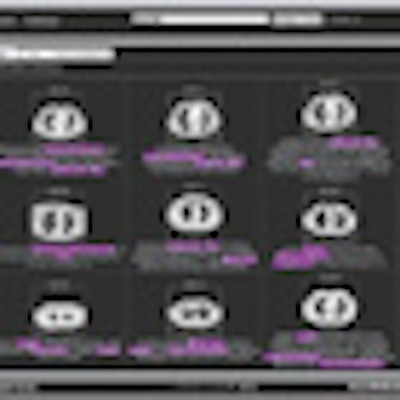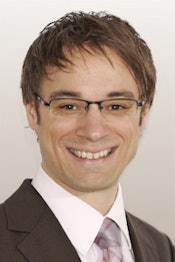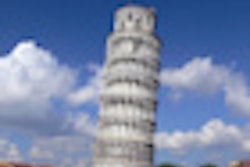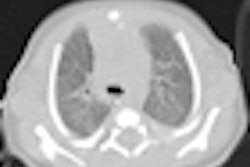
Natural language processing technology is increasingly being used for data mining of clinical records, but most software has been developed for English, French, or Spanish. A German-language radiology data-mining search tool can now help master fusional language challenges.
A research initiative undertaken by Freiburg-based semantic knowledge management software company Averbis and a team of radiologists at the University of Freiburg created RadMiner for multitasking radiology report handling and image retrieval. It's been in clinical and academic use at the university since 2010. Introduced in scientific sessions at this year's meetings of the European Congress of Radiology (ECR) and the Computer Assisted Radiology and Surgery (CARS) Congress, an article published online on 4 August 2012 in European Radiology describes precisely how this product works.
 Dr. Axel Gerstmair.
Dr. Axel Gerstmair.
Until structured reporting replaces free-text prepared radiology reports, both radiologists seeking comparative studies of cases they are reviewing, and researchers, tend to face considerable challenges when wrestling relevant information from the PACS archives. Many utilize self-developed or commercial reference file databases, or use the limited search term capabilities of their radiology information system (RIS) or PACS.
RadMiner can overcome these limitations. In a matter of seconds, it can complete a search and retrieve requested information from a database of more than 250,000 reports that will grow by approximately 150,000 reports prepared each year in the department of diagnostic radiology at the University Hospital Freiburg, according to lead author Dr. Axel Gerstmair. A recent test formally comparing RadMiner's performance against manual annotation of 108 reports generated a precision of 0.929 and recall of 0.952 when the software was used.
How RadMiner works
Contained in a server that is interfaced with a RIS (iSOFT), and a PACS (Impax EE, Agfa HealthCare), each finalized radiology report creates a HL7 message that is sent to RadMiner for local storage, comprehensive analysis, and indexing. After identifying any references to images, RadMiner queries the PACS, retrieves the images in JPG format, and stores them. Each reference JPG image, when opened, has the ability to retrieve the entire image set in DICOM format directly from the PACS server.
The foundation of a six-pronged analysis is the use of a German language version of RadLex V2.0, a lexicon of standardized radiological terms that has been augmented with 1,500 addition terms that are used in German radiology reports. Syntax analysis is undertaken first, tagging sentences, key words, and phrases, and parsing them into partial syntactic structures.
Upon completion of syntactic analysis, morpho-semantic analysis is performed. Language-specific subwords sharing the same meaning are linked within and across languages, and grouped into concept-like equivalence classes. The software then proceeds to perform sophisticated negation detection, abbreviation detection, and key image annotation that can identify numerous variations of key image annotations.
All of this is controlled by a Web-based graphical user interface that allows a user to perform both simple and advanced searches. Information that is retrieved is displayed in a ranked list that contains a small amount of report content and a key image thumbnail.
How it's being used
RadMiner is currently being used in routine clinical practice by radiologists and residents. It provides just-in-time information that may be used for comparative purposes in making a diagnosis, and provides residents with assistance in phrasing of reports and key elements that should be included in them.
Educators are using the tool to facilitate the development of content-rich lectures, and students find the tool provides them with an impressive "encyclopedia" of information. For clinical research, the tool is invaluable.
With increased use of RadMiner, the percentage of radiology reports that include key image references has increased, according to the authors. This is improving the number of search results with meaningful images.
RadMiner's developers hope to expand the capabilities of the software for other applications. One of the projects they hope to undertake is to identify and track dimensions of cancerous lesions and to link changes shown in diagnostic imaging exams. This capability could assist in therapy response evaluation.
At the CARS presentation, co-author Professor Dr. Elmar Kotter, vice chairman of the department of diagnostic radiology, stated that a plan was underway to commercialize the software for use in Europe during the second half of 2012 with Averbis.



















